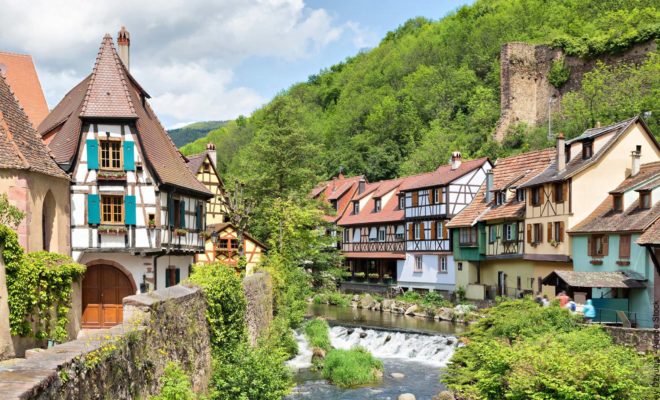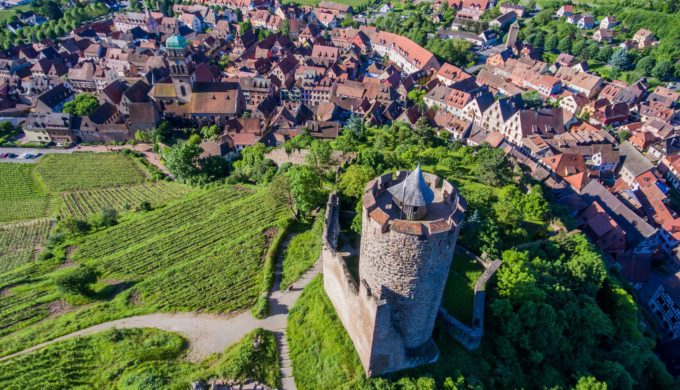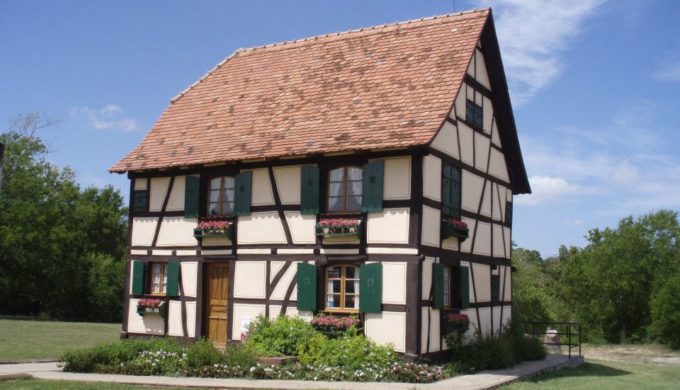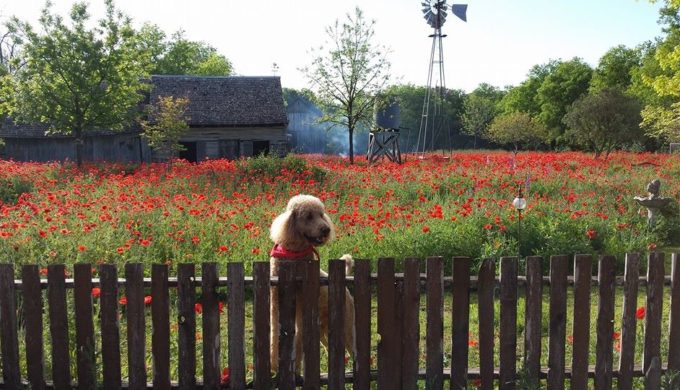By: John Hallowell
Photo: Facebook/Castroville Area Chamber of Commerce
Five years after it had won its independence, the fledgling Republic of Texas was in grave danger and deeply in debt; Texian leaders looked to the United States and several European countries for aid, and many ambitious plans were discussed. One of the few plans which actually yielded timely results was that of Henri Castro, a descendant of Portuguese Jews who had become an influential banker in France. In 1842, he entered a contract with the Texan government to settle a colony in southwestern Texas, and at great personal expense managed to bring several hundred immigrants from the French province of Alsace. It is helpful to understand that Europe was in a period of much political and economic turmoil during the 1840s, and tales of freedom and opportunity in Texas resonated with many in Germany, France and Scandinavia. There was no shortage of potential immigrants, but there were very few with the means and know-how to successfully manage a mass migration. Henri Castro was one of the very few. Before Texas joined the United States in 1845, and before the German Adelsverein landed its first settlers at Indianola, Henri Castro had successfully founded the westernmost settlement in Texas and was preparing to build four more towns in the next four years. All together, he brought 485 families and 457 single men to his colony, spending hundreds of thousands of dollars to provide for the success of his endeavor. The town of Castroville remains a monument to his wisdom and generosity. Today it’s known as the Little Alsace of Texas.
Photo: Historic A.H. Tondre House. Facebook/Castroville Area Chamber of Commerce
The architecture is a dead giveaway; it takes barely a momentary glance to realize that there is something different and special about the little town of Castroville (on the southern edge of the Texas Hill Country, just west of San Antonio). To understand it better, and appreciate it more, a short history lesson about the Little Alsace is in order. Let us introduce you to the Little Alsace of Texas!
Photo: Alsace, France. Facebook/Alsace
It was September 2, 1844, when Castro first set out from San Antonio with Captain Jack Hays and five Texas Rangers, to choose a spot for his first town. He designed a village in a park-like area near a bend in the Medina River, similar to villages in Europe, with town lots surrounded by outlying farms. His Alsatian pioneers built houses in the “fachwerk” style of the “old country,” using native stone, timber and lime plaster. Many buildings from Castroville’s first decade still remain today. Life wasn’t easy for the new Texans; they endured Comanche and Mexican raids, droughts, locusts and a cholera epidemic during their first few years, but Henri Castro took good care of his colonists, and they had it much better than the German pioneers who followed. The cornerstone for the first St. Louis Catholic Church was laid shortly after the town’s founding, in the fall of 1844. Castroville got a post office in January of 1847; by that time, Castro had built the new towns of Quihi (1845), Vandenburg (1846) and New Fountain (also in 1846). The original settlement of D’Hanis would be built farther west in 1848. Medina County was formed, with Castroville as its seat, in 1848; by 1850, Castroville was an important commercial center, with a population of 366. By 1856, the town supported three large stores, a brewery, and a water-powered gristmill. Residents raised corn, cattle, horses, hogs, and poultry, and sold produce to the military posts in the area.
Photo: Facebook/Castroville Area Chamber of Commerce
Although Castroville’s citizens were mostly opposed to secession, the town prospered through trade with Mexico during the Civil War. It continued to grow when the war was over, and by 1884 had reached a population of 1,000.That growth slowed in the 1880s when the town refused to grant the railroad a bonus, and was bypassed when Southern Pacific extended its line to the west. The new town of Hondo replaced Castroville as county seat in 1892, and the town began a long decline. Castroville reached a low point in 1931, when the population fell to just 325 people, mostly German farmers. Since then, Castroville has seen steady growth, and its population today is nearly 3,000. While few of the original Alsatian families remain, the historic homes that they built are carefully protected; there are more than 300 historic buildings in Castroville, and many are from the first decade of Castroville’s existence. One of Castroville’s biggest attractions today is a self-guided “Historic Walking Tour,” which includes a map with historical information about the unique Alsatian buildings in the old downtown area. Another of Castroville’s attractions is the Landmark Inn, a riverside complex which began with a one-story home and dry goods store built by Swiss merchant Cesar Monod in 1849. Through the years, the complex grew to include a hotel, a bathhouse, a gristmill and a private residence. It was donated to the state of Texas in 1974 and opened to the public as a state historic site in 1981. It offers bed-and-breakfast lodgings and a store, as well as tours of the old mill and other buildings, and access to the five-acre grounds.
Photo: Facebook/Castroville Area Chamber of Commerce
In recent years, Castroville’s heritage (Castroville’s nickname is The Little Alsace of Texas) has led to an unusual bond with the people of the original (“Big”) Alsace, in France. In 1997, a group of students from the agricultural college in Rouffach, France, came to Castroville to lay out a unique “Garden of Roots” in the shape of a map of Alsace at Castroville’s Regional Park. A tree was planted to mark the place of each village in Alsace, which all contributed to funding for the trip. That friendly gesture was followed by one even more dramatic; in 1997, a 17th-century Alsatian home from the town of Wahlbach was dismantled and shipped in pieces to Castroville, where (in a four-year project) it was reassembled and beautifully furnished, decorated and landscaped in the authentic Alsatian style by students and volunteer craftsmen from France and is now the Steinbbach Haus.
The Steinbach Haus now serves as the Castroville Visitors Center. A major event on Castroville’s busy social calendar is St. Louis Day, a huge church party featuring BBQ and Alsatian-style sausage held each August since the early 1880s. Thousands of people crowd into Castroville’s Koenig Park for the event, which continues to grow in popularity. The third building of the St. Louis Church is another of Castroville’s historic treasures; it was built in the late 1860s (but the first church building still stands, just a block away).
Photo: Facebook/Martha C. Howard
Despite its wealth of historic treasures, Castroville is a thriving, 21st-century community with an abundance of modern amenities. Many of the historic buildings now house modern businesses, and there is a good number of unique shopping opportunities in Castroville, as well as fine dining and lodging options (Castroville is famous for its Alsatian bakeries). Local parks offer facilities for camping, hiking, swimming and picnicking, as well as courts for volleyball and basketball, and fields for soccer, baseball and softball. Castroville has an excellent library (with many historical resources) and a modern airport; there is also a championship 18-hole golf course at the Alsatian Golf Club, just west of town.
Castroville, the little Alsace of Texas, is one of the most historically significant towns in the state, and should be near the beginning of any serious Hill Country tour (especially if you’re coming from San Antonio; it is the logical first stop). For more detailed information, visit www.steinbachhaus.org, then make plans to see this delightful Texas town known as the Little Alsace!








